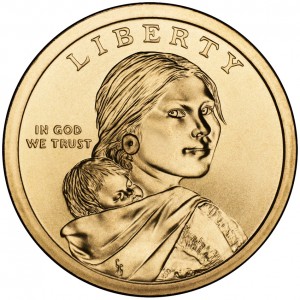The 2014 Native American $1 Coins will be the sixth year in which the US Mint released these strikes with annually changing reverse designs emblematic of the contributions made by Native Americans to the United States.
The Native American $1 Coin Act authorized the strikes and required them to be issued as close as possible to the chronological order in which the events depicted actually occurred. Accordingly, the first several issues to appear from the Mint are shown below along with some brief information on the theme which they depict:
- 2009 Native American $1 Coin – Three Sisters Method of Planting- shows a young woman planting seeds of corn, squash and beans in the Three Sisters method of planting discovered by the Native Americans around 1000 A.D.
- 2010 Native American $1 Coin – Government – The Great Tree of Peace – depicts a design emblematic of the Iroquois Confederacy. The Confederacy was a loose alliance created by five unique tribes in the early 1400’s.
- 2011 Native American $1 Coin – Wampanoag Treaty – shows the hands of Supreme Sachem Ousamequin Massasoit and Governor John Carver exchanging the peace pipe in 1621 emblematic of all of the treaties signed between Native Americans and European settlers.
Additional coins in the series continue the reverse designs containing "images celebrating the important contributions made by Indian tribes and individual Native Americans to the development of the United States and the history of the United States" as required by the authorizing legislation. This series is scheduled to end in 2016 at which time the Treasury Secretary will have the authority to decide the overall theme for future years strikes.
Shown on the obverse of all strikes in the series is the same portrait of the young Shoshone woman Sacagawea, as designed by Glenna Goodacre. Sacagawea served as a guide to the Lewis and Clark Expedition as it explored the wilderness area of the United States in the early 1800’s.
The reverse design will be emblematic of the contributions made by Native Americans to the United States.

